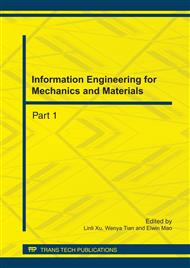p.168
p.173
p.178
p.185
p.190
p.195
p.200
p.207
p.213
Mechanical Behaviors of High Performance Recycled Aggregate Concrete
Abstract:
In this testing research, a series of High Performance Recycled Aggregate Concrete (HPRAC) with recycled aggregate were prepared and their mechanical behaviors were tested, especially uniaxial compressive stress-strain behavior. The influence of the recycled aggregate replacement on mechanical behaviors of HPRAC was studied by changing replacement ratio of recycled aggregate. Testing results show that the strength of HPRAC decrease a little with the increase of the content of recycled aggregate; the uniaxial compressive stress-strain curve of HPRAC is similar to that of ordinary concrete, and the ductibility of HPRAC improve with the increase of the content of recycled aggregate; the fitted regression curves (especially numerical model) approach to measured curves and can be used in constitutive relations analysis for concrete structure.
Info:
Periodical:
Pages:
190-194
Citation:
Online since:
July 2011
Authors:
Price:
Сopyright:
© 2011 Trans Tech Publications Ltd. All Rights Reserved
Share:
Citation:


